Olympia TF 400 Handleiding
Olympia
Bewakingscamera
TF 400
Bekijk gratis de handleiding van Olympia TF 400 (5 pagina’s), behorend tot de categorie Bewakingscamera. Deze gids werd als nuttig beoordeeld door 31 mensen en kreeg gemiddeld 4.5 sterren uit 16 reviews. Heb je een vraag over Olympia TF 400 of wil je andere gebruikers van dit product iets vragen? Stel een vraag
Pagina 1/5

Tür-/Fensterkontakte TF 400
Bestimmungsgemäße Verwendung
Die Tür-/Fensterkontakte dienen zur Zustandsüberwa-
chung von Türen und Fenstern. Voraussetzung für eine
bestimmungsgemäße Verwendung ist die sachgemäße
Installation sowie die Beachtung und Einhaltung der
Hinweise dieser Bedienungsanleitung.
Jede andere Verwendung als in der bestimmungsgemäßen Verwendung
beschrieben gilt als nicht bestimmungsgemäß. Eigenmächtige Veränderun-
gen oder Umbauten sind nicht zulässig und führen zur Beschädigung Ihrer
Tür-/Fensterkontakte.
Sicherheitshinweise
Bewahren Sie sich vor körperlichen Schäden und beachten Sie die
Hinweise!
WARNUNG! Erstickungsgefahr und Gefährdung der Gesundheit
durch Batterien! Kinder können Kleinteile, Verpackungs- oder
Schutzfolien verschlucken. Halten Sie Kinder vom Produkt und
dessen Verpackung fern! Batterien außerhalb der Reichweite von
Kindern aufbewahren. Batterien nicht verschlucken. Falls eine
Batterie verschluckt wurde, ist umgehend ein Arzt aufzusuchen.
VORSICHT! Gefährdung der Gesundheit und Umwelt durch
Batterien! Unsachgemäßer Umgang mit Batterien kann Ihre
Gesundheit und die Umwelt gefährden. Batterien nie önen,
beschädigen, verschlucken oder in die Umwelt gelangen lassen.
Batterien können giftige und umweltschädliche Schwermetalle
enthalten.
VORSICHT! Gehörschäden möglich. Das akustische Warnsignal
Ihrer Tür-/Fensterkontakte kann Ihr Gehör beschädigen. Die
Lautstärke des akustischen Warnsignals beträgt bis zu 80 dB.
Betreiben oder testen Sie Ihre Tür-/Fensterkontakte nicht in
unmittelbarer Nähe Ihres Gehörs.
Verpackungsinhalt
Prüfen Sie den Verpackungsinhalt Ihrer Tür-/Fensterkontakte, bevor Sie Ihre
Tür-/Fensterkontakte in Betrieb nehmen. Sollte etwas fehlen oder beschä-
digt sein, wenden Sie sich an unseren Service.
■4 x Tür-/Fensterkontakt
■Batterien (12 x Typ LR44)
■Bedienungsanleitung
Übersicht
Die Abbildung oben zeigt Ihnen einen Tür-/Fensterkontakt im Detail.
1Lautsprecher
2 Ein-/Aus-Schalter (ON FF/O)
3Tür-/Fenstermelder
4Batteriefach
5Magneteinheit
Batterien einlegen
Ihre Tür-/Fensterkontakte werden von jeweils drei Batterien (Typ LR44) mit
Strom versorgt.
1. Önen Sie das Batteriefach auf der Vor-
derseite Ihres Tür-/Fenstermelders.
2. Legen Sie drei Batterien (Typ LR44) in
das Batteriefach ein. Achten Sie darauf,
die Knopfzellen in der richtigen Ausrich-
tung einzulegen.
3. Schließen Sie das Batteriefach auf der
Vorderseite Ihres Tür-/Fenstermelders.
Empfohlene Montageorte
■Montieren Sie den Tür-/Fenstermelder am Fensterfl ügel und die Magnet-
einheit am Fensterrahmen.
■Montieren Sie den Tür-/Fenstermelder am Türblatt und die Magneteinheit
am Türrahmen.
Die Ausrichtung der beiden Komponenten zueinander muss dabei der gro-
ßen Abbildung oben auf diesem Faltblatt entsprechen.
Tür-/Fensterkontakte verwenden
1. Entfernen Sie die Schutzfolie der Klebestreifen auf den Rückseiten
Ihres Tür-/Fenstermelders und Ihrer Magneteinheit.
2. Montieren Sie Ihre Komponenten wie unter Empfohlene Montageorte
angegeben an den gewünschten Positionen.
3. Stellen Sie den Ein-/Aus-Schalter des Tür-/Fenstermelders auf die
obere Position (ON).
4. Sobald der Magnetkontakt zwischen Tür-/Fenstermelder und Magnet-
einheit unterbrochen wird, ertönt das akustische Warnsignal.
Sie können das akustische Warnsignal beenden, in dem Sie den Ein-/
Aus-Schalter auf die untere Position (
OFF) stellen. Anschließend müssen Sie
den Ein-/Aus-Schalter wieder auf die obere Position ( stellen.O )N
Entsorgung
Wollen Sie Ihr Gerät entsorgen, bringen Sie es zur Sammelstelle
Ihres kommunalen Entsorgungsträgers (z. B. Wertstoffhof). Nach
dem Elektro- und Elektronikgerätegesetz sind Besitzer von
Altgeräten gesetzlich verpfl ichtet, alte Elektro- und Elektronikge-
räte einer getrennten Abfallerfassung zuzuführen. Das Symbol
bedeutet, dass Sie das Gerät auf keinen Fall in den Hausmüll werfen dürfen!
Gefährdung von Gesundheit und Umwelt durch Batterien! Batterien nie
önen, beschädigen, verschlucken oder in die Umwelt gelangen lassen. Sie
können giftige und umweltschädliche Schwermetalle enthalten. Sie sind
gesetzlich verpfl ichtet, Batterien beim batterievertreibenden Handel bzw.
über die vom zuständigen Entsorgungsträger bereitgestellten Sammelstel-
len zu entsorgen. Die Entsorgung ist unentgeltlich. Die Symbole bedeuten,
dass Sie Batterien auf keinen Fall in den Hausmüll werfen dürfen und die
Batterien über Sammelstellen der Entsorgung zugeführt werden müssen.
Verpackungsmaterialien entsorgen Sie entsprechend den lokalen
Vorschriften.
Pfl egehinweise
■Reinigen Sie die Gehäuseoberfl äche mit einem weichen und fusselfreien
Tuch. Verwenden Sie keine Reinigungs- oder Lösungsmittel.
■Führen Sie einmal monatlich und nach jedem Batteriewechsel eine
Funktionskontrolle durch.
Konformitätserklärung
Die Konformität mit den EU-Richtlinien wird durch das CE-Zeichen
bestätigt. Die Konformitätserklärung zu diesem Produkt fi nden Sie
unter www.olympia-vertrieb.de
Garantie
Die Garantiezeit beträgt . Die Garantiezeit beginnt ab Kaufdatum. 24 Monate
Bei Problemfällen wenden Sie sich an unsere Hotline: 0180 5 007514
(Kosten aus dem dt. Festnetz bei Drucklegung: 14 ct/Min., maximal 42 ct/
Min. aus dem Mobilfunknetz). Ist Ihr Problem telefonisch nicht zu beheben,
können Sie Ihr Gerät in Originalverpackung mit beigefügtem Kaufbeleg an
folgende Anschrift senden:
Service Center Hattingen
Zum Kraftwerk 1
45527 Hattingen
Technische Daten
Gewicht ca. 34 g
Abmessungen (B x H x T) 40 x 60 x 20 mm
Stromversorgung 3 x Batterie (Typ LR44)
zulässige
Umgebungsbedingungen
0 °C bis +49 °C bei
0 % bis 80 % Luftfeuchte
Lautstärke Alarm (max.) 80 dB
TF 400 Door/Window Contacts
Intended Use
The door/window contacts serve to monitor the position of
doors and windows. A condition for complying with the
intended use is that the equipment is installed correctly
and the information in the manual is observed and
maintained.
Any use other than that described in Section „Intended Use“ is considered
unintended use. Unauthorised modifi cations or reconstructions are not per-
mitted and could cause damage to the door/window contacts.
Safety Instructions
Avoid any personal injury by paying attention to the following information!
WARNING! Risk of suocation and damage to health through
batteries! Children can swallow small parts, packaging and
protective foils. Keep the product and packaging out of reach of
children! Keep batteries out of reach of children. Do not swallow
batteries. If any type of battery is swallowed, seek medical
attention immediately.
CAUTION! Risk of damage to health and environmental pollution
through batteries! Improper handling of batteries can put your
health and the environment at risk. Never open, damage or
swallow batteries or allow them to pollute the environment.
Batteries may contain toxic, ecologically hazardous heavy metals.
CAUTION! Risk of hearing damage. The acoustic warning signal
from the door/window contacts could damage your hearing. The
volume of the acoustic alarm signal is up to 80 dB. Do not operate
or test the door/window contacts in the direct vicinity of your ear.
Package Contents
Check the package contents of the door/window contacts carefully before
putting the door/window contacts into operation. If anything is missing or
damaged, please contact our Service department.
■4 x door/window contact
■Batteries (12 x LR44 round cell)
■Operating manual
General View
The illustration above shows a door/window contact in detail.
1Loudspeaker
2 On/O switch (ON FF/O)
3Door/Window detector
4Battery compartment
5Magnet unit
Inserting the Batteries
The door/window contacts are each powered by means of three batteries
(LR44 round cell).
1. Open the battery compartment on the
rear side of the door/window contact.
2. Insert three batteries (LR44) in the
battery compartment. Pay attention that
the round cells are inserted the right way
around.
3. Close the battery compartment on the
rear side of the door/window contact.
1
3
2
4
5

Recommended Installation Locations
■Assemble the door/window detector on the window sash and the magnet
unit on the window frame.
■Assemble the door/window detector on the door leaf and the magnet unit
on the door frame.
The alignment of the two components in relation to each other must comply
with the large illustration at the top of this leafl et.
Using the Door/Window Contacts
1. Remove the protective foil from the adhesive strips on the rear covers
of the door/window detector and magnet unit.
2. Assemble the components at the required positions as described in
Recommended Installation Locations.
3. Set the On/Off switch for the door/window detector to its top position (
ON).
4. An acoustic alarm signal is issued the moment the magnetic contact
between the door/window detector and magnet unit is broken.
You can switch o the acoustic alarm signal by sliding the On/Off switch
to its lower position (OFF). You must then set the On/Off switch back to its
upper position ( . O )N
Disposal
In order to dispose of your device, take it to a collection point
provided by your local public waste authorities (e.g. recycling
centre). According to laws on the disposal of electronic and
electrical devices, owners are obliged to dispose of old electronic
and electrical devices in a separate waste container. The symbol
indicates that the device must not be disposed of in normal domestic waste!
Risks to health and the environment from batteries! Never open,
damage or swallow batteries or allow them to pollute the environment. They
may contain toxic, ecologically hazardous heavy metals. You are legally
obliged to dispose of batteries at shops which sell batteries or at collection
points provided by the public waste authorities. Disposal is free of charge.
The symbols indicate that the batteries must not be disposed of in normal
domestic waste and that they must be brought to collection points provided
by local public waste authorities.
Packaging materials must be disposed of according to local
regulations.
Care Instructions
■Clean the surface of the housing with a soft, lint-free cloth. Do not use
any solvents or cleaning agents.
■Complete a function test once a month and after changing the batteries.
Declaration of Conformity
Conformity of the equipment to the EU directives is confi rmed by
the CE mark. The Declaration of Conformity for this product is
available at www.olympia-vertrieb.de
Guarantee
Dear Customer,
we are pleased that you have chosen this equipment.
In the case of a defect, please return the device together with the receipt
and original packing material to the point-of-sale.
Technical Data
Weight Approx. 34 g
Dimensions (W x H x D) 40 x 60 x 20 mm
Power supply 3 x batteries (LR44 round cell)
Permissible
ambient conditions
0 °C to +49 °C at
0% to 80% rel. humidity
Alarm volume (max.) 80 dB
Contacts d'ouverture porte/fenêtre
TF 400
Utilisation conforme aux prescriptions
Les contacts d’ouverture porte/fenêtre servent à surveiller
l’état des portes et fenêtres. L’utilisation conforme à
l’usage prévu requiert un montage approprié ainsi que
l’observation et le respect des indications mentionnées
dans le présent mode d’emploi.
Toute utilisation autre que celle décrite au point Utilisation conforme à
l’usage prévu est considérée comme non conforme. Des modifi cations ou
transformations eectuées d’un propre gré sont interdites et conduisent à un
endommagement des contact d’ouverture porte/fenêtre.
Consignes de sécurité
Préservez-vous de dommages corporels et tenez compte des remarques !
AVERTISSEMENT ! Les piles représentent un risque pour la santé,
ainsi que d’étouement ! Les enfants peuvent avaler des petits
objets, des fi lms d’emballage ou de protection. Tenez les enfants
à l’écart du produit et de son emballage ! Conservez les piles hors
de portée des enfants. Ne pas avaler celles-ci. Consultez
immédiatement un médecin en cas d’ingestion d’une pile.
P RUDENCE ! Les piles représentent un danger pour la santé et
l’environnement ! Une manipulation des piles incorrecte peut
nuire à votre santé et à l’environnement. Ne jamais ouvrir, endom-
mager, avaler les piles ou ne jamais faire pénétrer leur contenu
dans l’environnement. Elles peuvent contenir des métaux lourds
toxiques et nuisibles pour celui-ci.
P RUDENCE ! Dommage auditif possible. Le signal d’avertisse-
ment acoustique de vos contacts d’ouverture porte/fenêtre peut
endommager votre audition. Son volume sonore est de 80 dB. Ne
faites pas fonctionner ou ne testez pas ces contacts à proximité
immédiate de votre oreille.
Contenu du coret
Contrôlez le contenu de l’emballage de vos contacts d’ouverture porte/
fenêtre avant de les faire fonctionner. Veuillez vous adresser à notre service
après-vente au cas où une pièce manque ou soit endommagée.
■4 contacts d’ouverture porte/fenêtre
■12 piles LR44
■Mode d’emploi
Vue d’ensemble
Les illustrations dans la partie supérieure vous montrent les détails d’un
contact d’ouverture porte/fenêtre.
1Haut-parleur
2 Interrupteur Marche/Arrêt (ON FF/O)
3Détecteur d'ouverture porte/fenêtre
4Compartiment à piles
5Unité aimant permanent
Pose des piles
Chacun de vos contacts est alimenté en
courant par trois piles LR44.
1. Ouvrez le compartiment à piles situé sur
le devant de votre détecteur d’ouverture
porte/fenêtre.
2. Placez-y les trois piles. Assurez-vous de
la polarité exacte.
3. Fermez le compartiment.
Emplacements de montage re-
commandés
■Installez le détecteur d’ouverture porte/fenêtre sur le battant de la fenêtre
et l’aimant sur le cadre de la fenêtre.
■Installez le détecteur d’ouverture porte/fenêtre sur le vantail de la porte et
l’aimant sur le cadre de la porte.
L’orientation des deux éléments doit être celle représentée sur l’illustration
supérieure de ce mode d’emploi.
Utiliser les contacts d’ouverture porte/fenêtre
1. Retirez la pellicule de protection des rubans adhésifs qui se trouvent au
dos du détecteur et de l’aimant.
2. Installez les éléments aux positions voulues comme indiqué au point
Emplacements de montage recommandés.
3. Positionnez l’interrupteur Marche/Arrêt du détecteur sur (
ON).
4. Dès que le contact magnétique entre le détecteur et l’aimant est inter-
rompu, une alarme retentit.
Vous pouvez l’interrompre auparavant en positionnant l’interrupteur Marche/
Arrêt sur la position inférieure (OFF). Vous devez ensuite positionner à nou-
veau l’interrupteur sur la position supérieure (ON).
Mise au rebut
Si vous ne voulez plus vous servir de votre appareil,
veuillez l’apporter au centre de collecte de l’orga-
nisme d’élimination des déchets de votre commune
(par ex. centre de recyclage). D’après la loi relative
aux appareils électriques et électroniques, les
propriétaires d’appareils usagés sont tenus d’apporter tous les anciens
appareils électriques et électroniques dans un collecteur séparé. L’icône
ci-contre signifi e que vous ne devez en aucun cas jeter votre appareil dans
les ordures ménagères ! Mise en danger de l’homme et pollution de
l’environnement causées par les piles ! Ne jamais ouvrir, endommager,
avaler les piles ou ne jamais faire pénétrer leur contenu dans l’environne-
ment. Elles peuvent contenir des métaux lourds toxiques et nuisibles pour
celui-ci. Vous êtes tenu par la loi d’éliminer les piles en les déposant chez
un revendeur ou en les déposant dans les collecteurs correspondants de
l’organisme d’élimination des déchets local. Leur élimination est gratuite.
Ces symboles signifi ent que vous ne devez en aucun cas jeter les piles
dans les ordures ménagères, mais que vous devez les apporter à un centre
de collecte.
Éliminez les matériaux d’emballage conformément au règlement
local.
Conseils d’entretien
■Nettoyez la surface du boîtier avec un chion doux et non pelucheux.
N’utilisez pas de produits d’entretien ni de solvants.
■Eectuez un contrôle de fonctionnement 1 fois par mois et après chaque
changement des piles.
Déclaration de conformité
Le marquage CE confi rme la conformité aux directives UE. Vous
trouverez la déclaration de conformité de ce produit sur www.
olympia-vertrieb.de.
Garantie
Cher client,
nous sommes très heureux que vous ayez choisi cet appareil.
En cas de défaut, veuillez retourner l’appareil dans son emballage d’origine
et accompagné du bon d’achat au magasin où vous l’avez acheté.
Données techniques
Poids env. 34 g
Dimensions (l x h x p) 40 x 60 x 20 mm
Alimentation en courant 3 batteries de type LR44
Conditions ambiantes tolérées 0 °C à +49 °C avec
0 % à 80 % d'humidité relative
Volume sonore de l'alarme (max.) 80 dB
1
3
2
4
5

Contatti porta/fi nestra TF 400
Impiego conforme alle disposizioni
I contatti porta/fi nestra consentono di sorvegliare lo stato
di porte e fi nestre. Requisito per un impiego conforme è la
corretta installazione come anche l’osservanza delle
indicazioni fornite nelle presenti istruzioni d’uso.
Qualsiasi altro impiego diverso da quanto descritto è
ritenuto non conforme agli usi previsti. Non sono ammesse modifi che o
variazioni arbitrarie che potrebbero causare il danneggiamento dei contatti
porta/fi nestra.
Indicazioni di sicurezza
Evitare lesioni fi siche e osservare le indicazioni!
AVVERTENZA! Rischio di soocamento! Batterie e pile possono
provocare danni alla salute! I bambini possono ingerire parti
piccole, materiali d’imballo o pellicole protettive. Tenere il prodotto
e la confezione lontani dalla portata dei bambini! Conservare le
batterie fuori della portata dei bambini. Non ingerire le batterie. In
caso di ingestione di una batteria o pila, consultare immediata-
mente un medico.
ATTENZIONE! Batterie e pile possono provocare danni alla salute
e all’ambiente! Un uso improprio delle batterie può provocare
danni alla salute e all’ambiente. Non aprire, danneggiare, ingerire
o disperdere mai nell’ambiente le batterie. Le batterie possono
contenere metalli pesanti nocivi e dannosi per l’ambiente.
ATTENZIONE! Possibili danni all’udito. Il segnale acustico dei
contatti porta/fi nestra può causare danni all’udito. Il volume del
segnale acustico arriva fi no a 80 dB. Evitare di mettere in
funzione o testare i contatti porta/fi nestra nelle immediate
vicinanze delle orecchie.
Contenuto della confezione
Verifi care il contenuto della confezione dei contatti porta/fi nestra prima di
metterli in funzione. In caso dovesse mancare qualcosa o risultare danneg-
giato, si prega di rivolgersi al nostro servizio di assistenza.
■4 contatti porta/fi nestra
■Batterie (12 di tipo LR44)
■Istruzioni d’uso
Panoramica
La fi gura in alto mostra i contatti porta/fi nestra in dettaglio.
1Altoparlante
2 Interruttore ON/OFF (ON FF/O)
3Sensore porta/fi nestra
4Vano batterie
5Unità magnetica
Inserimento delle batterie
Tre batterie a bottone di tipo LR44 alimentano i contatti porta/fi nestra con
corrente elettrica.
1. Aprire il vano batterie sul davanti del
sensore porta/fi nestra.
2. Inserire nel vano tre batterie di tipo
LR44. Osservare il corretto orientamen-
to quando si inseriscono le batterie a
bottone.
3. Chiudere il vano batterie sul davanti del
sensore porta/fi nestra.
Punti di ubicazione consigliati
■Montare il sensore porta/fi nestra sul battente e l’unità magnetica sul
telaio della fi nestra.
■Montare il sensore porta/fi nestra sul battente e l’unità magnetica sul
telaio della porta.
L’orientamento dei due componenti l’uno rispetto all’altro deve rispondere a
quanto raffi gurato in alto sul presente foglietto illustrativo.
Utilizzo dei contatti porta/fi nestra
1. Rimuovere la pellicola protettiva dalle strisce adesive presenti sul lato
posteriore di sensore porta/fi nestra e unità magnetica.
2. Montare i componenti nelle posizioni richieste secondo quanto indicato
nella sezione Punti di ubicazione consigliati.
3. Portare l’interruttore ON/OFF del sensore porta/fi nestra nella posizione
superiore (ON).
4. Appena il contatto magnetico tra sensore porta/fi nestra e unità magne-
tica viene interrotto si avverte un segnale acustico di allarme.
Il segnale acustico di allarme si lascia disattivare prima dell’intervallo
impostato, portando l’interruttore ON/OFF in posizione (
OFF). Fatto questo,
portare l’interruttore di ON/OFF nuovamente nella posizione in alto ( .O )N
Smaltimento
Al termine del ciclo di vita dell’apparecchio occorre smaltirlo
consegnandolo a un punto di raccolta istituito dalla propria società
di smaltimento rifi uti comunale (ad es. centro di riciclo materiali).
Secondo quanto previsto dalla legge sugli apparecchi elettrici ed
elettronici, i proprietari di apparecchi esauriti sono per legge tenuti
alla consegna di tutti gli apparecchi elettrici ed elettronici presso un centro di
rilievo rifi uti in raccolta differenziata. Il simbolo indica che non è assoluta-
mente consentito smaltire l’apparecchio assieme ai normali rifi uti domestici!
Batterie e pile possono provocare danni alla salute e all’ambiente! Non
aprire, danneggiare, ingerire o disperdere mai nell’ambiente le batterie.
Queste possono contenere metalli pesanti nocivi e dannosi per l’ambiente.
Per legge sussiste l’obbligo di consegnare batterie presso rivenditori di
batterie o centri di riciclo utilizzando gli appositi contenitori di raccolta e
provvedendo in tal modo al corretto smaltimento. Lo smaltimento è gratuito.
I simboli indicano che non è assolutamente consentito gettare batterie nei
rifi uti domestici, consegnandole ai fi ni dello smaltimento nei rispettivi punti di
raccolta.
Smaltire confezioni ed imballaggi in base a quanto indicato dalle
norme in vigore a livello locale.
Consigli per la cura
■Pulire la superfi cie dell’involucro esterno con un panno morbido e antipil-
ling. Non utilizzare mai detergenti o solventi.
■Verifi care il funzionamento del dispositivo una volta al mese e ogni volta
che si sostituiscono le batterie.
Dichiarazione di conformità
La conformità con le normative EU viene confermata dal marchio
CE. La dichiarazione di conformità relativa al presente prodotto è
disponibile su www.olympia-vertrieb.de
Garanzia
Caro cliente,
ci congratuliamo con Lei per aver scelto questo apparecchio. In caso di
difetti la preghiamo di ritornare l’apparecchio, completo di imballo originale e
scontrino di acquisto, al punto vendita dove è stato eettuato l’acquisto.
Specifi che tecniche
Peso ca. 34 g
Dimensioni (L x H x P) 40 x 60 x 20 mm
Alimentazione elettrica 3 batterie tipo LR44
Condizioni ambiente
consentite
da 0 °C a +49 °C con
0% - 80% di umidità dell'aria
Volume allarme (max.) 80 dB
Contactos de puerta/ventana TF 400
Uso previsto
Los contactos de puerta/ventana sirven para vigilar el
estado de las puertas y ventanas. La observación y el
cumplimiento de las advertencias que fi guran en el
presente manual de instrucciones son requisitos para el
correcto uso del aparato.
Cualquier otro uso diferente al previsto se considera como no conforme al
objetivo previsto. Se prohíbe expresamente cualquier modifi cación o trans-
formación por cuenta propia que además provoque daños en los contactos
de puerta/ventana.
Advertencias de seguridad
¡Tenga cuidado de no sufrir daños físicos y tenga en cuenta las notas!
¡AVISO! ¡Peligro de asfi xia y peligro para la salud provocado por
pilas! Los niños pueden tragar piezas pequeñas, películas de
embalaje o protección. ¡Mantenga alejados a los niños del
producto y de su embalaje! Guardar las pilas fuera del alcance de
los niños. No tragarse las pilas. En caso de tragarse una pila se
debe acudir inmediatamente al médico.
¡PRECAUCIÓN! ¡Peligro para la salud y el medio ambiente
provocado por pilas! El manejo incorrecto de las pilas puede
perjudicar su salud y el medio ambiente. Nunca abrir, dañar,
ingerir ni arrojar al medio ambiente las pilas. Las pilas pueden contener
metales pesados tóxicos y dañinos para el medio ambiente.
¡PRECAUCIÓN! Se pueden producir daños en el oído. La señal
de advertencia acústica de los contactos de puerta/ventana
puede producirle daños en el oído. El volumen de la señal de
advertencia acústica es de hasta 80 dB. No utilice ni pruebe los
contactos de puerta/ventana muy cerca del oído.
Contenido del embalaje
Compruebe el contenido del embalaje de los contactos de puerta/ventana
antes de ponerlos en servicio. Diríjase a nuestro Servicio Técnico si falta
algo o se observan daños.
■4 contactos de puerta/ventana
■Pilas (12 del tipo LR44)
■Manual de instrucciones
Vista general
La fi gura anterior muestra detalladamente un contacto de puerta/ventana.
1Altavoz
2 Interruptor de conectado/desconectado (ON FF/O)
3Detector de puerta/ventana
4Compartimento de pilas
5Unidad magnética
Introducir las pilas
Los contactos de puerta/ventana se alimentan con energía mediante tres
pilas (tipo LR44).
1. Abra el compartimento de pilas en el
lado frontal del detector de puerta/ven-
tana.
2. Coloque tres pilas (tipo LR44) en el
compartimento de pilas. Preste atención
a colocar las pilas botón con la orienta-
ción correcta.
3. Cierre el compartimento de pilas en
el lado frontal del detector de puerta/
ventana.
1
3
2
4
5
Product specificaties
| Merk: | Olympia |
| Categorie: | Bewakingscamera |
| Model: | TF 400 |
| Kleur van het product: | Wit |
| Gewicht: | 140 g |
| Breedte: | 40 mm |
| Diepte: | 20 mm |
| Hoogte: | 60 mm |
| Aan/uitschakelaar: | Ja |
| Ondersteund aantal accu's/batterijen: | 3 |
| Inclusief batterij: | Ja |
| Bedrijfstemperatuur (T-T): | 0 - 49 °C |
| Relatieve vochtigheid in bedrijf (V-V): | 0 - 80 procent |
| Aantal producten inbegrepen: | 4 stuk(s) |
| Type batterij: | LR44 |
| Alarm decibels: | 90 dB |
Heb je hulp nodig?
Als je hulp nodig hebt met Olympia TF 400 stel dan hieronder een vraag en andere gebruikers zullen je antwoorden
Handleiding Bewakingscamera Olympia

9 December 2023

29 Juni 2023

19 Juni 2023

17 Juni 2023

17 Juni 2023

15 Juni 2023

12 Juni 2023

10 Juni 2023

9 Juni 2023

6 Juni 2023
Handleiding Bewakingscamera
- Hawking Technologies
- Grandstream
- BRK
- Wisenet
- Whistler
- Clas Ohlson
- Hollyland
- Netatmo
- Enabot
- WisuAlarm
- Chacon
- LevelOne
- BirdDog
- Planet
- Laserliner
Nieuwste handleidingen voor Bewakingscamera
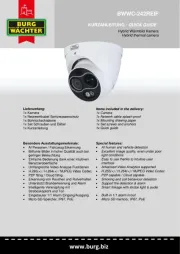
2 Augustus 2025
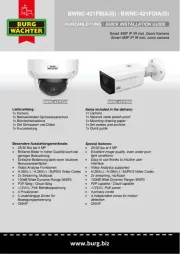
2 Augustus 2025
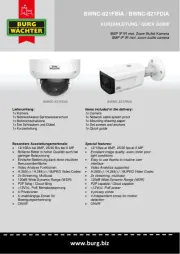
2 Augustus 2025
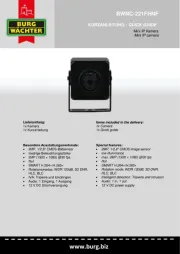
2 Augustus 2025
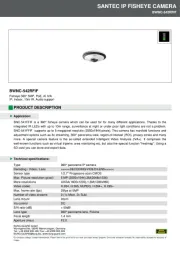
2 Augustus 2025
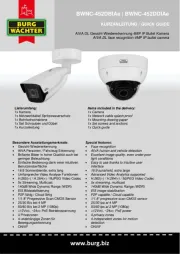
2 Augustus 2025
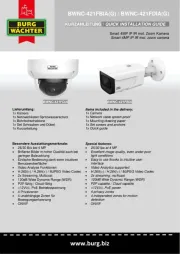
2 Augustus 2025
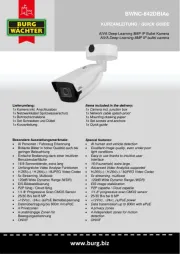
2 Augustus 2025
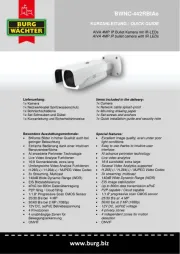
2 Augustus 2025
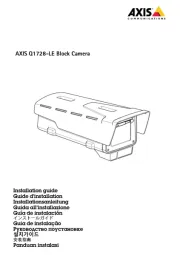
29 Juli 2025